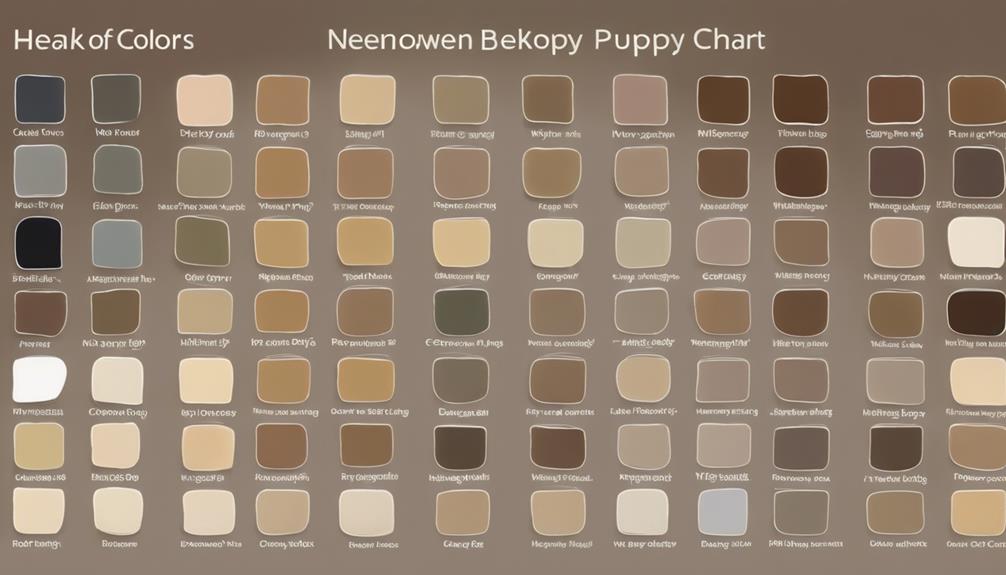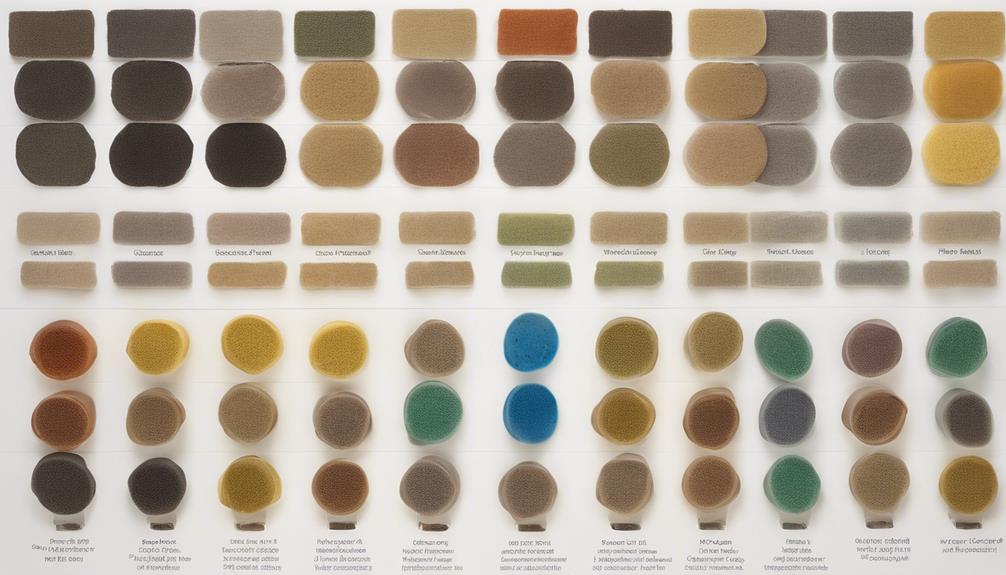As pet owners, we understand that monitoring a newborn puppy's poop is as important as checking the essential signs of a tiny human. But have you ever pondered about the significance of the color spectrum in your furry friend's stool?
Understanding the nuances of newborn puppy poop colors can reveal a wealth of information about their health. From the common browns to the alarming whites, each hue tells a tale worth knowing.
But why stop at just colors? Stay with us to discover the secrets behind your puppy's poop and how it can be a window into their well-being.
Key Takeaways
- Monitoring puppy poop colors aids in detecting health issues early.
- Well-formed, orange poop signifies healthy digestion in newborn puppies.
- White stools may indicate malabsorption, requiring immediate veterinary attention.
- Consistent tracking of poop color, consistency, and frequency ensures optimal puppy health.
Understanding Puppy Poop Colors
When examining newborn puppy poop colors, it's essential to understand the significance of each shade in relation to their digestive health. Normal colors like orange and yellow indicate healthy digestion. However, bright red or black stools in newborn puppies could be a red flag for underlying health issues that require immediate veterinary attention. These abnormal colors may indicate internal bleeding or other serious problems.
Similarly, white stools in newborn puppies might signal malabsorption or maldigestion concerns, which also warrant prompt veterinary evaluation.
Monitoring the color variations in newborn puppy poop is critical for early detection of health issues. Changes in color can provide valuable insights into their digestive health and overall well-being. By paying close attention to the color of their stools, we can quickly identify potential problems and seek timely veterinary care. Remember, a proactive approach to monitoring newborn puppy poop colors can help ensure their best health and well-being.
Signs of Healthy Puppy Poop

Examining the characteristics of healthy puppy poop provides valuable insights into their digestive health and overall well-being. Healthy puppy poop is typically well-formed, orange in color, and has a soft consistency. The mother may consume the puppy's stools for essential reasons, aiding in nutrient absorption and development. Monitoring the consistency of newborn puppy poop is critical for early detection of health issues as well. Well-formed and soft puppy poop indicates a healthy digestive system, ensuring proper nutrient absorption for the puppy's development.
| Characteristic | Description |
|---|---|
| Color | Typically orange in color, indicating a healthy digestive system. |
| Consistency | Soft consistency is a sign of well-formed poop, essential for nutrient absorption. |
| Mother Consumption | Mothers may consume their puppies' stools to support their digestive health. |
Decoding Unusual Puppy Poop Colors
Deciphering unusual puppy poop colors provides pivotal insights into potential health issues that may affect newborn puppies. White poop in newborn puppies is a concerning sign that can indicate malabsorption or maldigestion due to underdeveloped digestive systems. This abnormal coloration could also point towards serious conditions such as septicemia, overconsumption, or systemic infections. Immediate veterinary consultation is essential when observing white stools in newborn puppies to address neonatal health problems promptly.
Monitoring weight gain and carefully managing dietary intake are vital strategies to help combat white stools and guarantee the overall well-being of the puppy. By staying vigilant and seeking professional guidance, we can work towards resolving issues related to unusual puppy poop colors, safeguarding the health and development of these young animals.
Tips for Analyzing Puppy Poop

Analyzing puppy poop can provide valuable insights into the health and well-being of newborn puppies. When examining puppy poop, remember these tips:
- Color: Note the color of the poop. Orange poop is normal and indicates a healthy digestive system in newborn puppies.
- Consistency: Check the consistency of the poop. Soft stools are typical for puppies, but watery or extremely hard stools could signal digestive issues.
- Frequency: Monitor how often the puppy poops. Regular bowel movements are a good sign of a healthy digestive system in puppies.
Understanding the nuances of puppy poop can help detect potential health concerns early on. If you notice any abnormalities in color, consistency, or frequency, consult a veterinary professional promptly. Early intervention and expert guidance can prevent complications and make sure the well-being of your puppy.
Importance of Tracking Puppy Poop
Tracking puppy poop color serves as an important indicator of digestive health and overall well-being in newborn puppies. By observing the color variations in the puppy's stool, pet parents can monitor their puppy's health status closely, enabling early detection of potential health issues. Understanding the specific health issues that different poop colors may signify is vital for providing timely veterinary attention when necessary. Regularly checking and analyzing newborn puppy poop can reveal insights into the puppy's digestive system and aid in promoting overall health.
| Puppy Poop Color | Significance |
|---|---|
| Yellow | Indicates issues with digestion or liver problems |
| Green | May suggest a diet change or intestinal concerns |
| Black | Could signal bleeding in the upper digestive tract |
| Red | Indicates possible blood in the stool |
| White | Could signify issues with the pancreas or liver |
Being attentive to these variations and promptly addressing any concerns can contribute to maintaining the puppy's well-being and promoting a healthy start to their life.
Frequently Asked Questions
What Color Should Newborn Puppy Poop Be?
We monitor newborn puppy poop color closely. Healthy poop is typically orange, signaling important digestion. Abnormal colors could indicate issues. It's critical for early detection. If concerned, consulting a vet is wise for guidance and reassurance.
What Does Unhealthy Puppy Poop Look Like?
Unhealthy puppy poop may exhibit watery consistency, abnormal colors like yellow or green, presence of mucus, and a strong odor. Changes in these aspects may signal digestive issues and necessitate veterinary evaluation.
Why Is My 1 Week Old Puppy Pooping White?
We noticed our 1-week-old puppy pooping white. This could signal malabsorption or maldigestion, common in newborns with developing systems. Prompt vet care is important to prevent dehydration and hypoglycemia. Immediate treatment is essential for their health.
What Color Is a Puppy's Poop Supposed to Be?
Our puppy's poop should typically be orange, indicating healthy digestion. Diet and mother's milk influence color. Consistency is important for health assessment. Monitoring color and texture is essential for digestive health. Orange poop is common and normal.
Conclusion
To sum up, remember the old saying 'you are what you eat.'
By closely monitoring your newborn puppy's poop colors and textures, you can gain valuable insights into their digestive health and overall well-being.
Using the Newborn Puppy Poop Color Chart as a guide, you can make sure your furry friend stays happy and healthy.
Remember, a healthy gut means a healthy pup!









